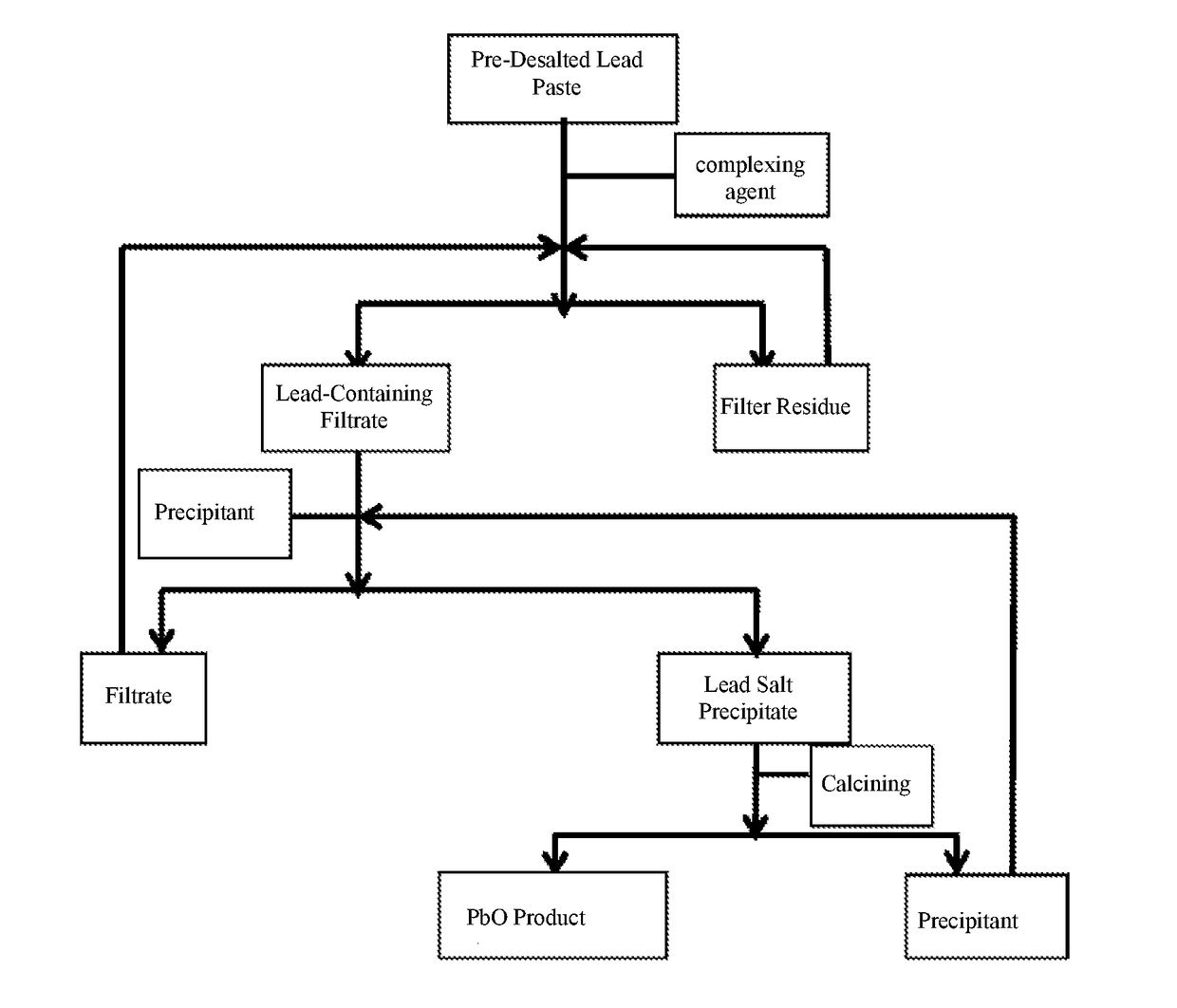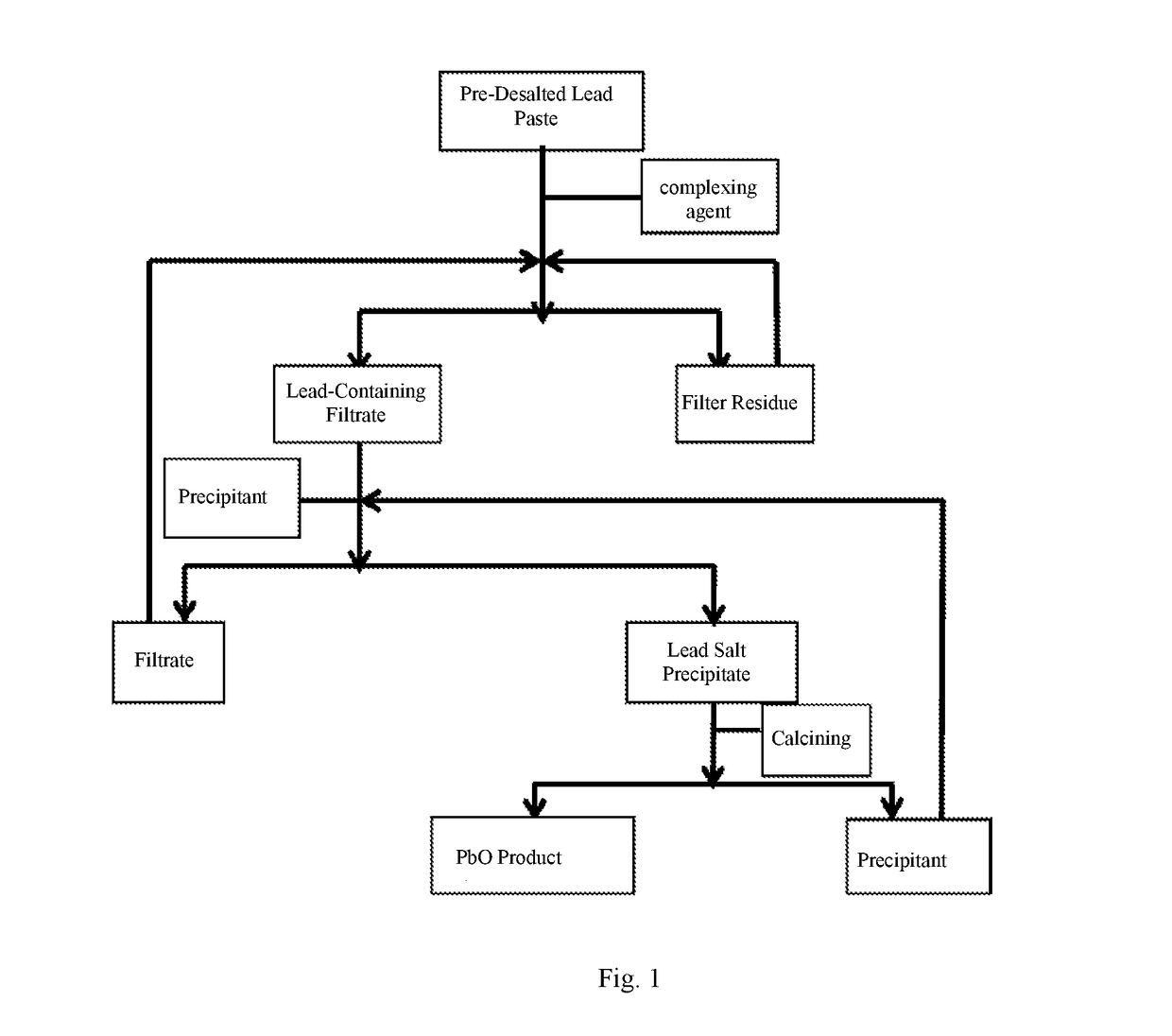Method for recovering lead oxide from waste lead paste
a technology of waste lead paste and lead oxide, which is applied in the direction of lead carbonates, lead monoxide, cell components, etc., to achieve the effects of reducing the dissolving procedure, saving raw materials, and reducing the procedur
- Summary
- Abstract
- Description
- Claims
- Application Information
AI Technical Summary
Benefits of technology
Problems solved by technology
Method used
Image
Examples
embodiment 1
[0055]Lead paste obtained by crashing and separating waste commercial 12V, 7 Ah valve-regulated sealed lead-acid batteries with a conventional method is used. After the total amount of PbSO4 in the lead paste is ascertained through conventional chemical titrimetric analysis, 10% NaOH is added at a stoichiometric ratio as alkaline liquor, the processing temperature is controlled at 35° C., the processing time is 10 min., and the stirring rate is 100 rpm. After the lead paste is treated with the alkaline liquor, solid-liquid separation is carried out, to obtain pre-desalted lead paste and desalting mother liquid that mainly contains Na2SO4. The treating process is as follows:[0056]a. 1 kg pre-desalted lead paste is added into a first reactor (10 L), 0.6 kg lead powder obtained by crashing lead-containing plate grating with a conventional method is added in an excessive amount into the reactor, 8 g CoO is added as a catalyst, 0.5 mol / L arginine water solution is added in an adequate am...
embodiment 2
[0060]12% KOH solution is used as the pre-desalting alkaline liquor, and the desalting temperature is 40° C. In the step a, 0.75 mol / L ethylene diamine water solution is used as the complexing agent, and 13 g CuO is used as the catalyst; in the step b, SO2 is used in replacement of CO2. The rest conditions are the same as those in the embodiment 1. The purity of the PbO obtained finally is 99.97%, and the comprehensive recovery rate of Pb is 99.6%.
embodiment 3
[0061]In the step a, 1 mol / L ethylene diammine diacetate water solution is used as the complexing agent, and 5 g silver nitrate is used as the catalyst; in the step b, SO3 is used in replacement of CO2. The rest conditions are the same as those in the embodiment 1. The purity of the PbO obtained finally is 99.96%, and the comprehensive recovery rate of Pb is 99.5%.
PUM
| Property | Measurement | Unit |
|---|---|---|
| temperature | aaaaa | aaaaa |
| temperature | aaaaa | aaaaa |
| concentration | aaaaa | aaaaa |
Abstract
Description
Claims
Application Information
 Login to View More
Login to View More - R&D
- Intellectual Property
- Life Sciences
- Materials
- Tech Scout
- Unparalleled Data Quality
- Higher Quality Content
- 60% Fewer Hallucinations
Browse by: Latest US Patents, China's latest patents, Technical Efficacy Thesaurus, Application Domain, Technology Topic, Popular Technical Reports.
© 2025 PatSnap. All rights reserved.Legal|Privacy policy|Modern Slavery Act Transparency Statement|Sitemap|About US| Contact US: help@patsnap.com


